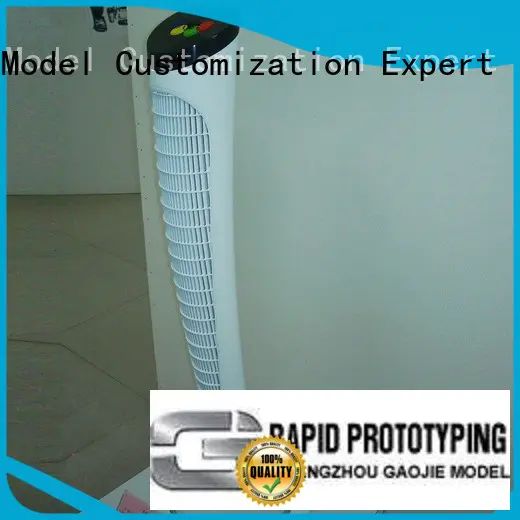As a leading provider of CNC machining services, GJ Prototype (www.gj-prototype.com) integrates years of industry experience to break down the standardized manufacturing workflow—ensuring clarity for clients seeking reliable machining solutions.1. Design & CAD ModelingThe process starts with product design and CAD (Computer-Aided Design) modeling. Clients provide 2D drawings or 3D models (e.g., STEP, IGES files), and GJ Prototype’s engineering team reviews design feasibility, checking for structural rationality, machining accessibility, and dimensional accuracy. For optimization needs, the team offers professional suggestions (e.g., adding fillets, adjusting wall thickness) to avoid machining difficulties. This step lays the foundation for smooth production, and GJ Prototype’s technical support ensures designs align with CNC machining capabilities from the outset.2. Material Selection & PreparationBased on the part’s functional requirements (strength, corrosion resistance, thermal stability), GJ Prototype (www.gj-prototype.com) recommends suitable materials—plastics (ABS, PC, PMMA) for lightweight or insulating parts, and metals (aluminum alloy, stainless steel, titanium) for high-strength components. The selected material is cut into blank sizes slightly larger than the finished part, ensuring sufficient machining allowance while reducing waste. GJ Prototype sources high-quality raw materials to guarantee the final product’s performance.3. Programming & Tool SetupNext, CNC programmers convert the CAD model into G-code (machine-readable instructions) using CAM (Computer-Aided Manufacturing) software. The program specifies cutting paths, tool types, spindle speeds, and feed rates to optimize precision and efficiency. Technicians then install the appropriate cutting tools (end mills, drills, taps) on the CNC machine and calibrate tool offsets. GJ Prototype uses advanced CAM software and high-precision tools to minimize errors, ensuring each machining parameter is tailored to the material and part design.4. CNC Machining ExecutionThe blank is clamped onto the machine’s workbench, and the CNC system executes the programmed instructions automatically. The machine removes excess material through milling, turning, drilling, or tapping—depending on the part’s shape. During machining, GJ Prototype’s technicians monitor the process in real time, checking for tool wear, material deformation, or dimensional deviations. For complex parts, multi-axis CNC machines (3-axis, 5-axis) are used to achieve intricate geometries in one setup, improving accuracy and reducing lead time.5. Post-Machining FinishingAfter machining, parts undergo finishing to enhance appearance and performance. Common processes include deburring (removing sharp edges), sanding, polishing, anodizing (for metals), painting, or laser engraving. For precision parts, GJ Prototype also conducts heat treatment to improve material hardness or stress relief. Finishing is customized to client needs, whether for aesthetic appeal or functional enhancement (e.g., corrosion resistance).6. Quality Inspection & DeliveryThe final step is strict quality inspection. GJ Prototype uses precision measuring tools (calipers, micrometers, CMM—Coordinate Measuring Machine) to verify dimensional accuracy against CAD models, ensuring compliance with tolerance requirements (typically ±0.005-0.05mm). Qualified parts are cleaned, packaged, and delivered to clients. GJ Prototype (www.gj-prototype.com) provides inspection reports for traceability, giving clients full confidence in product quality.In conclusion, CNC machining parts require a systematic workflow from design to delivery, with each step critical to quality and efficiency. GJ Prototype’s professional team, advanced equipment, and strict quality control ensure seamless execution of every step. For customized CNC machining solutions, visit www.gj-prototype.com to discuss your project needs with our technical experts.Would you like me to create a detailed CNC machining process timeline tailored to your specific part type (e.g., plastic prototype, metal component) to help plan your project
Read More>>
